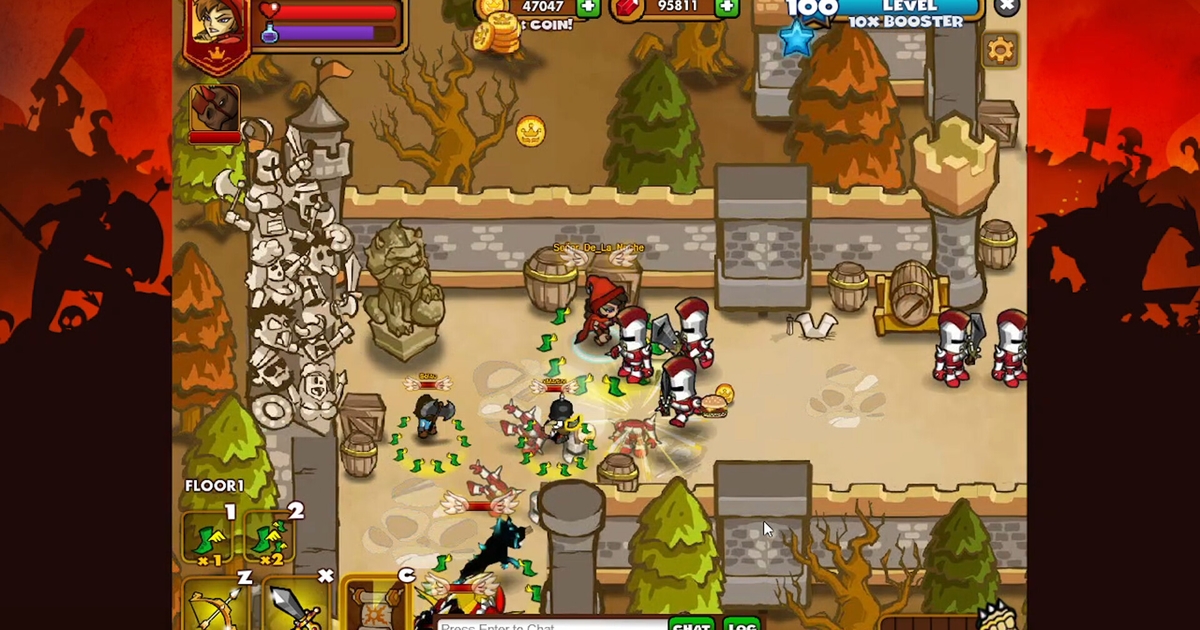The Resurrection of a Cult Flash Game: A Programmer’s Dedication
In the vast expanse of the internet, where countless games rise and fall, some titles manage to capture the hearts and minds of players, earning a special place in the collective memory. These games, often referred to as “cult classics,” possess a unique charm that transcends their technical limitations or mainstream appeal. One such game, once thought lost to the sands of time, has been given a new lease on life thanks to the dedication of a resourceful programmer who rescued its source code from an unlikely source: a child’s laptop. This act of digital preservation not only revives a beloved game but also highlights the importance of preserving our gaming heritage.
The Allure of Cult Flash Games
Flash games, with their accessibility and simple yet engaging gameplay, were a staple of the early internet. They provided a creative outlet for developers and offered players a diverse range of experiences, from quirky platformers to challenging puzzles. Among these games, certain titles stood out, captivating audiences with their unique themes, innovative mechanics, or memorable characters. These cult flash games fostered a strong sense of community among their players, who often shared tips, strategies, and fan creations. However, with the decline of Flash technology, many of these games faced the threat of disappearing forever.
A Programmer’s Mission: Retrieving the Lost Code
Faced with the potential loss of a cherished game, one programmer took it upon themselves to embark on a mission of digital archaeology. The quest began with the discovery that the game’s source code was residing on a child’s laptop, seemingly forgotten and inaccessible. Undeterred, the programmer employed their technical skills to extract the code, carefully navigating the intricacies of the system to retrieve the precious data. This act of dedication demonstrates the passion and commitment of individuals who recognize the cultural significance of these games.
Overcoming Technical Hurdles
Rescuing the source code was only the first step in the revival process. Flash technology had become increasingly outdated, posing compatibility issues with modern systems. The programmer faced the challenge of adapting the code to a new environment, ensuring that the game could be played seamlessly on contemporary devices. This involved rewriting certain components, optimizing performance, and addressing potential security vulnerabilities. The programmer’s expertise and perseverance were crucial in overcoming these technical hurdles and bringing the game back to life.
Rebuilding and Enhancing the Game
Beyond simply making the game playable, the programmer sought to enhance the experience for both new and returning players. This involved incorporating new features, refining the gameplay mechanics, and improving the overall presentation. The programmer carefully balanced the desire to stay true to the original vision with the opportunity to modernize the game for a new audience. This delicate balancing act ensured that the game retained its unique charm while becoming more accessible and enjoyable.
The Community’s Role in the Revival
The revival of the cult flash game was not solely the work of a single programmer. The game’s dedicated community played a vital role in the process, providing feedback, testing the game, and offering suggestions for improvements. This collaborative effort fostered a sense of ownership and shared enthusiasm, demonstrating the power of community-driven preservation. The community’s support not only helped to refine the game but also ensured that it resonated with its intended audience.
Preserving Gaming Heritage: A Call to Action
The story of the cult flash game’s revival serves as a reminder of the importance of preserving our gaming heritage. As technology evolves and platforms change, countless games risk being lost to time. It is crucial for individuals, organizations, and institutions to take action to safeguard these cultural artifacts, ensuring that future generations can experience and appreciate the rich history of gaming. This can involve archiving game code, documenting development processes, and creating emulators to run older games on modern systems.
A Legacy Reborn
The successful revival of the cult flash game is a testament to the power of passion, dedication, and community collaboration. It demonstrates that even seemingly lost games can be resurrected and enjoyed by new audiences. This act of digital preservation not only brings joy to players but also serves as an inspiration for others to protect and celebrate our gaming heritage. As the game is reintroduced to the world, it carries with it a renewed sense of appreciation for the creativity, innovation, and community that define the world of cult flash games.

